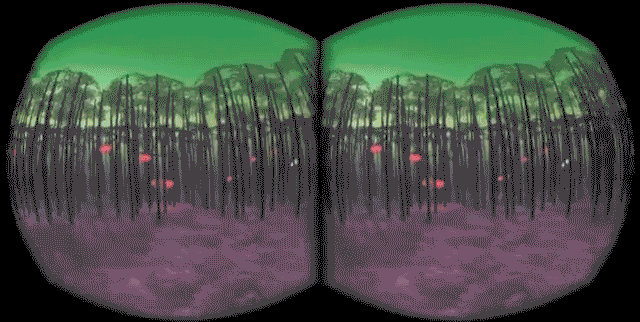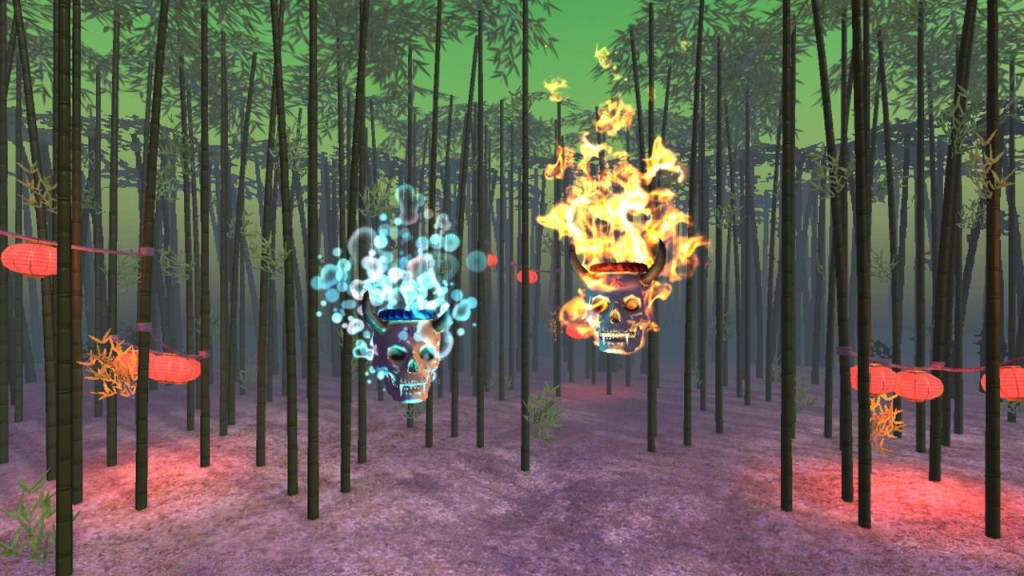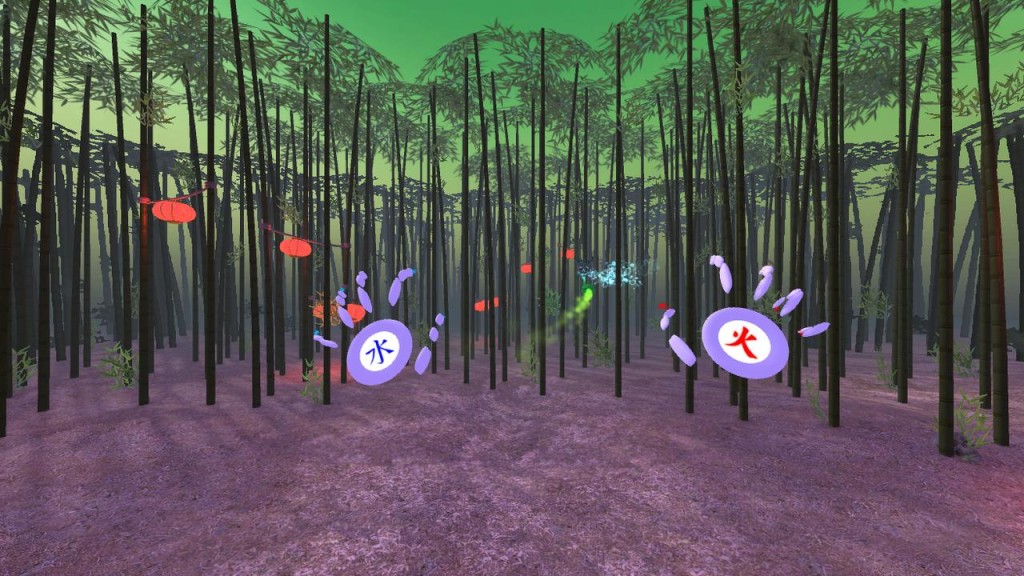Over the next several weeks, we’re spotlighting the top 20 3D Jam experiences chosen by the jury and community votes. These spotlights will focus on game design, interaction design, and the big ideas driving our community forward.
Kevin Tsang’s ElementL: Ghost Story placed 6th in the 3D Jam, and is one of several VR demos we’re showcasing this weekend at IndieCade East. In this VR demo, as a Taoist monk you’ve been sent to rid a village of evil spirits haunting a nearby bamboo forest. Use your mastery of the elements to put them to rest.

What was your thinking in creating a VR experience where you’re standing in one spot with 360° interactivity?
We wanted to take full advantage of 360° VR immersion by not limiting the view to one direction. Players are encouraged to look all around by the slowly circling skulls, to show that they can attack from any direction. We also used 3D audio cues to help direct players, so headphones are a must. We also didn’t want the player to be holding controllers for walking or have any automatic movement to help reduce VR sickness – so you’re rooted to the spot.
Tell us how you designed the enemies and forests of ElementL.
The bamboo scene was something that we could create quickly and also adds a sense of atmosphere which fits with the theme. Likewise, the enemies don’t need complex walking animations if they’re floating!
For the game design, we knew we wanted to make use of the Leap Motion’s left/right hand detection. We had planned a much more complex array of powers, but quickly decided that simple gestures with the left and right hand were more fun and easy to learn. It was at that point that we decided to have two elements – one for each hand and the corresponding enemy type.

What’s the connection between hand controls and magic powers?
We instantly wanted to do a first-person VR experience with your own hands, and we thought about various mechanics we could use – from punching to sword swinging to superhero powers. We settled on a fireball mechanic, as it felt most natural, and the lack of tactile feedback didn’t detract from the experience. Also, who doesn’t want to be a fireball tossing wizard?
What UX design tips do you have for other developers?
In VR the depth of your on screen prompts is important to allow the player to focus on them, ideally they will be at the same depth as the objects they are focused on at the time. You also never want to wrench control from the player in VR as this can be very disorientating. Also know the limitations of your system so you can craft a smooth experience for the player and improve accessibility for everyone. You have to ask yourself at each stage of development whether something is adding to the fun of the game or an unnecessary complication.
What inspires you as a game developer?
What I love most about making games is seeing other people play them and enjoy a new experience. Being able to create those experiences is a fantastic opportunity that we have as small indies thanks to affordable and powerful tools such as Unity, Oculus Rift and Leap Motion.

Kevin runs Mechabit, a Liverpool-based indie studio currently developing a game for PC and Xbox called Kaiju Panic. Follow his exploits on Twitter @spinaljack.





[…] blog.leapmotion.com/elementl-maste… @LeapMotion #madewithunity […]
February 13, 2015 at 6:40 am